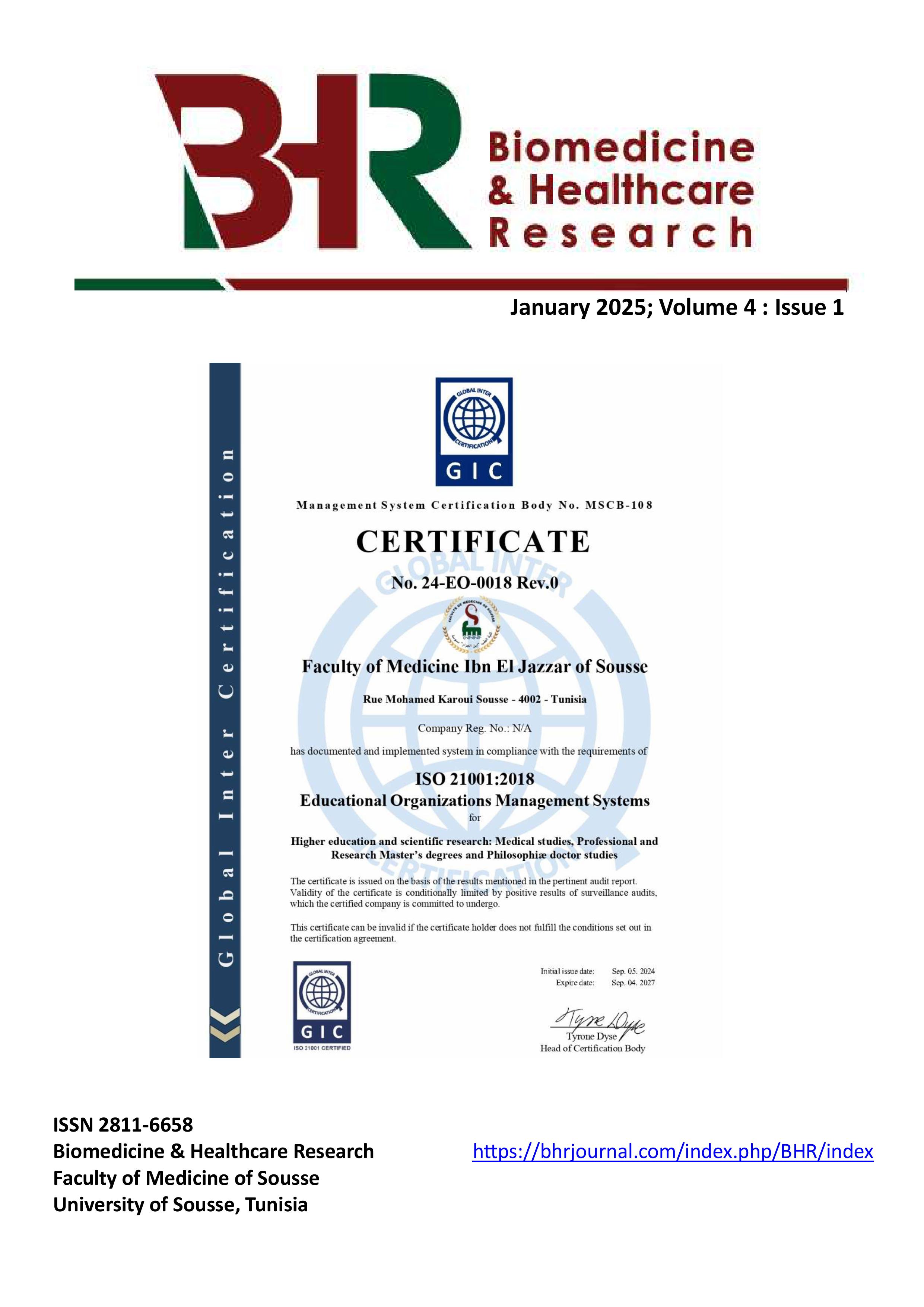Prevention of postoperative atrial arrhythmias in major broncho-pulmonary cancer surgery: A pilot study of Celiprolol vs. Diltiazem
DOI :
https://doi.org/10.71599/bhr.v4i1.94Mots-clés :
Cardiac arrhythmias, Thoracic surgery, Atrial fibrillation, Pneumonectomy, Celiprolol, DiltiazemRésumé
The incidence of postoperative arrhythmia (POA) after bronchopulmonary cancer (BPC) surgery reaches 50% and is associated with increased morbidity and mortality. The role of pharmacological prevention of POA remains controversial. This study aims to compare the efficacy of the beta-blocker celiprolol versus the calcium channel blocker diltiazem in preventing POA following pneumonectomy and bilobectomy for BPC.
Material and Methods: We conducted a randomized, single-blind, prospective study including patients older than 18 years with preoperative sinus rhythm undergoing major pulmonary resection for BPC. Patients were randomized into two groups: the beta-blocker (BB) group received daily oral celiprolol (Céliprol®) 200 mg and the calcium channel blocker (CCB) group received daily oral diltiazem (Monotildiem® LP) 200 mg postoperatively.
The primary endpoint was the occurrence of early postoperative atrial fibrillation (POAF). Secondary outcomes included the incidence of late POAF, other cardiac arrhythmias, arrhythmia duration, length of intensive care unit (ICU) and hospital stay, drug-related adverse effects, and 30-day mortality. Statistical analysis was performed using SPSS software version 19.0.
Results: Thirty patients were enrolled. The two groups were comparable in demographic characteristics, surgical and anesthetic parameters, and baseline biological data. The overall incidence of POA was 17%. The incidence of POAF was 7%, with no significant difference between groups. All arrhythmias were transient, lasting less than 48 hours, and without recurrence. Supraventricular extrasystoles were the only other observed arrhythmias. Postoperative arrhythmias were significantly associated with bilobectomy, prolonged anesthesia duration, and extended surgical time compared to patients without arrhythmias. The most common postoperative complication was pneumonia. No drug-related adverse effects were observed, and no deaths occurred within 30 days.
Conclusion: Prophylactic treatment reduces the incidence of POAF, but identifying the optimal agent remains challenging. An individualized approach, considering patient comorbidities and surgical factors, is essential for effective prevention.
Téléchargements
Téléchargements
Publiée
Comment citer
Numéro
Rubrique
Licence
(c) Tous droits réservés Chayma Sassi, Sonia Ouerghi , Nizar Fitouhi, Rym Karaborni , Ines Ben Zid, Kaouther Ben Amara, Mahdi Abdenadher , Adel Merghli, Amira Dridi , Taher Mestiri 2025

Ce travail est disponible sous licence Creative Commons Attribution - Pas d'Utilisation Commerciale - Pas de Modification 4.0 International.





